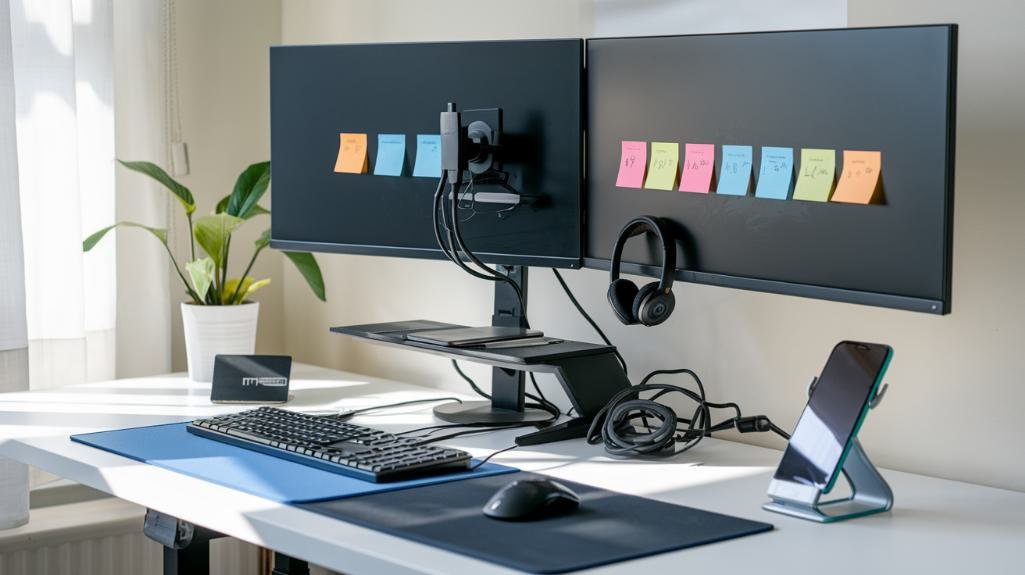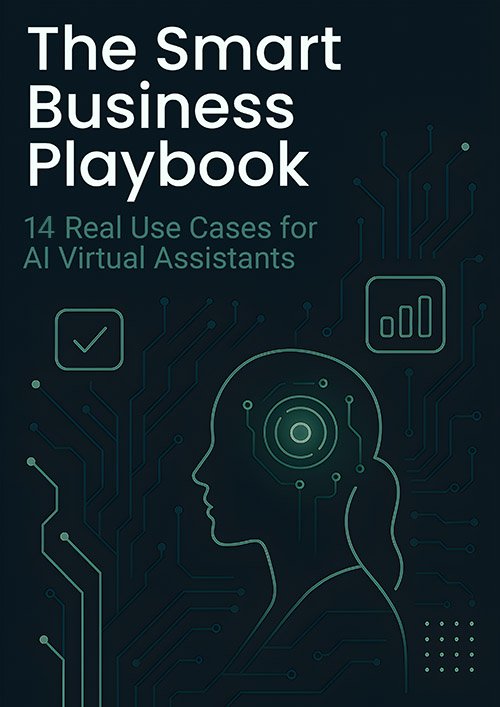You'll streamline your remote IT onboarding by shipping equipment early, providing clear setup guides, and implementing secure communication channels. Focus on creating structured virtual training programs with regular check-ins and collaborative tools. Build team connections through video meet-and-greets and assign culture buddies for guidance. Track progress using specific metrics and performance data. These foundational steps will transform your onboarding from overwhelming to organized and effective.
Key Takeaways
- Ship essential IT equipment early and provide detailed setup guides to ensure employees are ready on day one.
- Implement secure access protocols with multi-factor authentication and VPN connections for remote system access.
- Schedule dedicated IT support sessions during the first week to resolve technical issues and answer questions.
- Create comprehensive digital documentation for software installation, network configuration, and troubleshooting common problems.
- Use remote monitoring tools to ensure proper device setup and maintain ongoing security compliance.
Preparing the Digital Workspace and Equipment Setup

When onboarding remote employees, setting up their digital workspace requires careful planning and proactive coordination.
You'll need to ship all essential equipment at least one week before their start date, giving them time to handle any technical issues that may arise during the setup process.
Provide a thorough IT setup guide that walks them through device configuration, network connectivity, and software installation.
Schedule dedicated IT sessions to help them navigate their new digital workspace confidently.
Using collaborative platforms, share onboarding materials and documentation they can reference whenever needed.
Implement remote monitoring tools to guarantee proper device setup and security compliance.
This proactive approach to equipment setup allows your IT team to quickly address technical challenges while giving new remote employees the resources they need to succeed from day one. Additionally, ensuring proper equipment setup aligns with the timely preparation of tech devices to create a positive first impression.
Establishing Secure Communication Channels and Access
Because remote work environments present unique security challenges, establishing robust communication channels and access protocols must be your top priority.
Start by implementing encrypted messaging platforms and VPNs to safeguard sensitive information exchanged between remote employees and your organization. Deploy multi-factor authentication across all access points to guarantee only authorized personnel can enter your systems.
Create clear guidelines for using company communication tools, particularly when sharing documents and data.
Schedule regular training sessions to educate your team about cybersecurity best practices and emerging threats. Additionally, ensure compliance with HR confidentiality laws to protect employee privacy and sensitive data.
Don't forget to continuously monitor your communication platforms for potential vulnerabilities, and promptly apply security updates to prevent data breaches.
These measures will create a secure foundation for your remote workforce while maintaining operational efficiency.
Building Virtual Team Connections and Culture

With secure communication channels in place, your next focus should be building meaningful connections among remote team members.
Start your virtual onboarding process with meet-and-greet sessions that connect new hires with existing staff. Implement regular team-building activities, such as online games or collaborative projects, to strengthen relationships across physical distances.
Virtual meet-and-greets and team activities bridge the distance gap, helping remote teams build authentic connections and strengthen workplace relationships.
Leverage video conferencing tools for both scheduled check-ins and informal conversations to maintain open communication and foster authentic team dynamics.
Assign culture buddies to new employees, providing them with dedicated mentors who can guide them through company values and workplace practices.
Share personal stories and experiences during onboarding sessions to create an engaging experience that helps remote team members feel connected and aligned with your organization's culture from day one. Additionally, structured onboarding processes can significantly enhance engagement and satisfaction among new hires.
Creating Structured Remote Training Programs
As organizations embrace remote work, structured training programs become essential for effectively onboarding new employees. You'll need to develop thorough training systems that accommodate different learning styles in a virtual environment.
By implementing both synchronous and asynchronous formats, you can guarantee remote employees engage with the material effectively while maintaining flexibility.
- Create detailed onboarding checklists to track progress through essential skills and knowledge.
- Schedule regular check-in meetings to provide support and address concerns promptly.
- Leverage collaborative tools to foster peer learning and real-time assistance.
Your structured training approach should incorporate continuous feedback loops to refine the program's effectiveness. Additionally, consider integrating data-driven insights to enhance onboarding effectiveness and improve retention rates.
Use virtual platforms that enable seamless knowledge sharing and team collaboration, guaranteeing new hires can access resources and connect with colleagues throughout their onboarding journey.
Monitoring Progress and Performance Metrics
Effective monitoring of remote employee progress requires clear performance benchmarks and systematic tracking methods.
You'll want to establish specific performance metrics during onboarding that help new hires understand what success looks like in their role. Implement structured feedback through regular check-ins and surveys to track their adaptation.
Leverage project management tools to monitor task completion and guarantee new employees stay aligned with organizational goals.
Provide a self-assessment checklist that outlines skills development milestones for their first 30, 60, and 90 days. This approach helps new hires track their own progress while giving managers visibility into their development.
Continuously analyze performance data and onboarding process feedback to optimize your employee integration strategy and make necessary adjustments for future remote hires. Additionally, utilizing data-driven decisions can enhance the effectiveness of your onboarding process by aligning training with actual skill needs.
Frequently Asked Questions
What Are the 3 Most Important Elements of Successful Onboarding?
Like Microsoft's success with remote hires, you'll need three key elements: a detailed onboarding checklist with clear success metrics, consistent virtual introductions for cultural integration, and accessible training resources with feedback loops.
How to Successfully Onboard Remote Employees?
You'll need a virtual welcome, robust digital tools, clear communication strategies, and a detailed onboarding checklist. Establish mentorship programs, provide training resources, and create feedback loops to guarantee successful team integration.
What Are the 5 C's of Effective Onboarding?
Like building a sturdy bridge, you'll need five key pillars: Compliance for rules, Clarification for role understanding, Culture for values alignment, Connection for relationships, and Check-back for progress monitoring.
What Are the 4 C's of Employee Onboarding?
The four C's of your onboarding process are Compliance (policies and regulations), Clarification (role expectations), Culture (organizational values), and Connection (team integration and relationships) for an effective employee experience.


